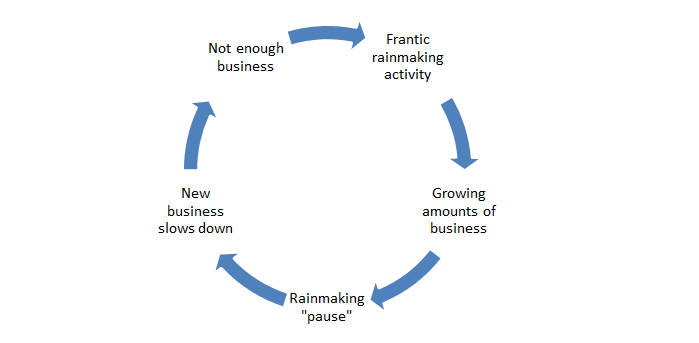Why you MUST track your rainmaking results.
How do you track the results you get from your business development efforts? I recently spoke with a potential client and asked that question. Her response? “I don’t need to track my results. I know what’s working.” She had a $25,000 book of business, and based on our conversation, I suspect she could triple that relatively quickly just by getting clear on what was and wasn’t working in her rainmaking.
When you’re working on legal business development, having some sense of which activities are profitable is extremely important as you determine whether to discontinue or to increase your involvement with that activity. Unfortunately, an informal, memory-based, qualitative system for tracking results in not sufficient. Memories fade and may be inaccurate. Just as mental tracking is unreliable for balancing a checkbook, it is insufficient for making decisions about business development activity.
Every lawyer should have a client intake routine that includes determining how that client became aware of you and your practice. Consider incorporating into your client intake form a question that asks, “How did you find out about me/this firm?”
If you work in a larger firm that does not use intake forms, consider creating your own form that requests this information and gathers information about how and when a client wants to be contacted, who else should be kept apprised of the matter’s progress, and other information that will help you deliver better client service. And if you’d prefer to avoid forms altogether, create an intake checklist so you make certain to ask these questions.
This insight from business performance improvement expert Dr. H. James Harrington applies directly to business development for lawyers:
Measurement is the first step that leads to control and eventually to improvement. If you can’t measure something, you can’t understand it. If you can’t understand it, you can’t control it. If you can’t control it, you can’t improve it.
How important is it to track your results? According to one consultant, two out of The Ten Most Effective Law Marketing Techniques deals with tracking (numbers 3 and 10). While I might word my top 10 list differently, there’s no doubt that knowing what is and is not working is critical if you want to grow your practice.
Extra tip for law firm marketing: if you’re hoping to increase your firm’s or team’s business development results, one of the first steps you should put into place is tracking what each team member is doing and what results those activities are generating. Not only will you have better information about which activities work, but you’ll also get much-needed information about which team members are putting in the appropriate effort, where their strengths lie, and how you can help them to be more successful.

